We haven’t had as many invasive vines, and we have most of them pretty much under control or eradicated altogether — except bindweed.
Field bindweed (Convolvulus arvensis)
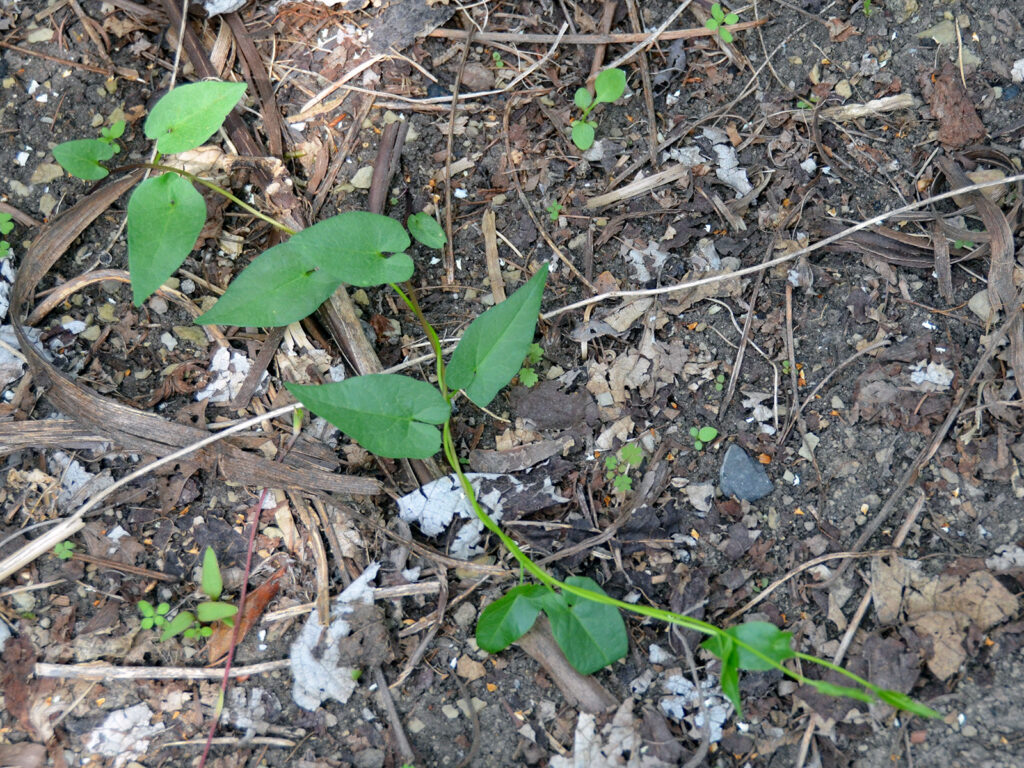
This small vine looks pretty innocuous BUT not when seen tangling up our shrubs in our habitat hedgerow. We try to keep after it, but it requires more vigilance than we’ve given it so far. It’s definitely something we need to put a higher priority on or we’ll have an even greater problem.
- Learn more:
- Penn State Extension: The noxious, persistent, invasive, and perennial bindweeds
- Univ. of Michigan Matthaei Botanical Gardens: Invasive of the Week: Field Bindweed – For control In home garden environments, persistence is the name of the game.
Pulling every three weeks during the growing season for three years (!!!) will deplete the root system reserves. Garden forks are helpful for teasing out visible root pieces. Gardeners could also mark sites after removal to note where new shoots appear, then weed those out repeatedly.
Black bindweed aka wild buckwheat (Fallopian convolvulus)
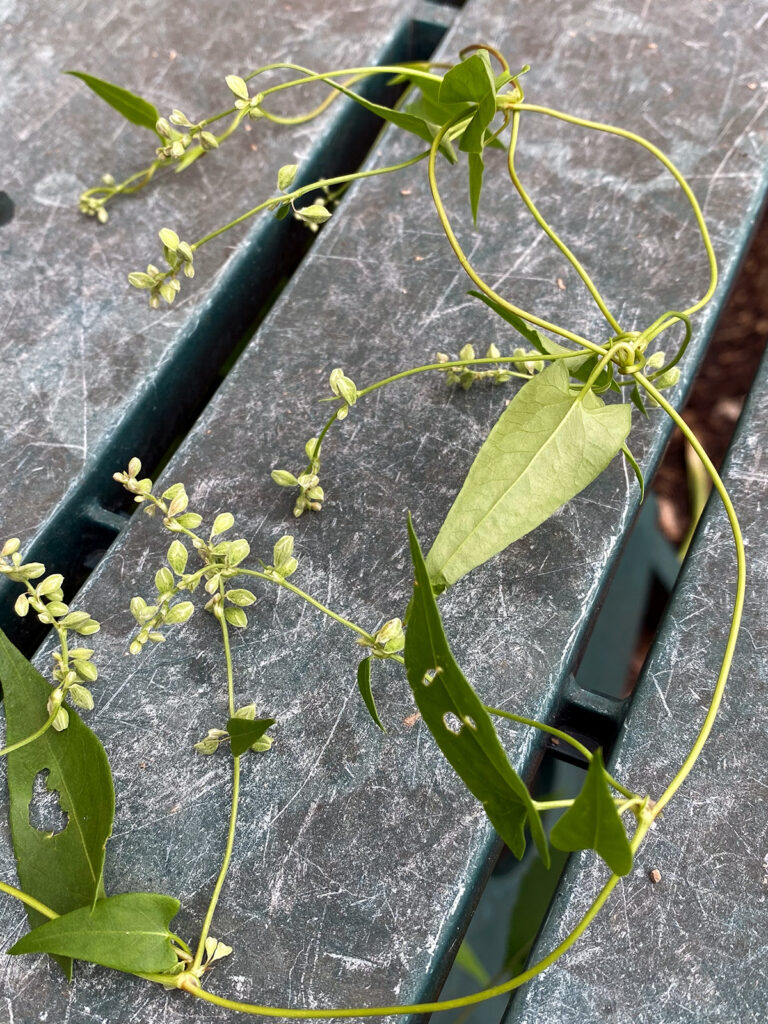
We first saw this in 2023 — unsettling to find that we could still be seeing a new-to-us invasive plant!
This is the first (and hopefully ONLY) one we’ve seen. I hope I removed it soon enough…
Japanese honeysuckle vine (Lonicera japonica)
Japanese honeysuckle is an invasive vine we used to have in our yard, one we bought (highly recommended!) from our local plant nursery many years ago.
True, it was pretty, grew without much attention, and had a beautiful fragrance to boot. So I was a bit sad about it, but yanked it out anyway. Any momentary pleasure we got from this plant was negated by the damage it could do. I never took a photo of it, but they can still be seen at almost any garden center. I’m sure there will be plenty there — unfortunately.
Fortunately, our native honeysuckle vines are real beauties — more beautiful than the Japanese variety, though, sadly, there is no fragrance.
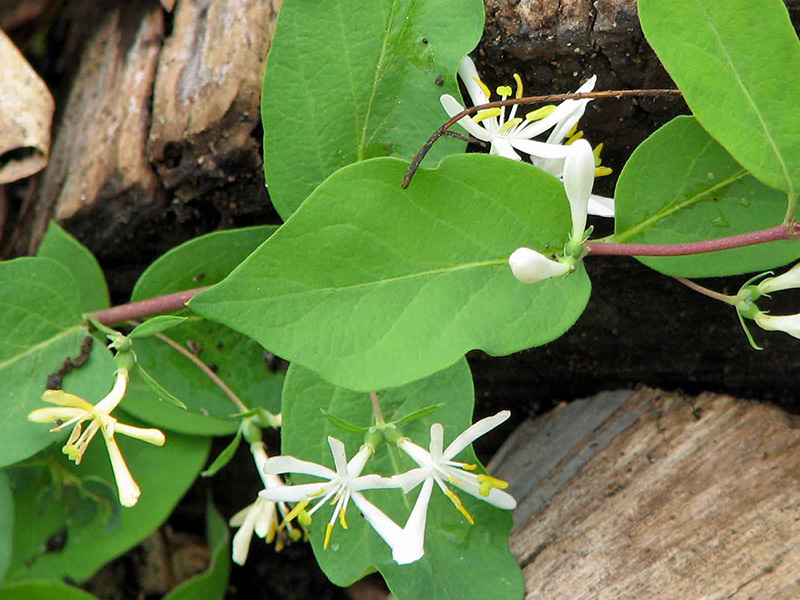
I found the vine growing in one of our flower beds. It must have been there at least a year, but since I think this is the first year it flowered, I guess I just didn’t see it before. How did it get there? I assume from berries dropped by birds or the seeds in the bird poop. At least it was easy to pull out.
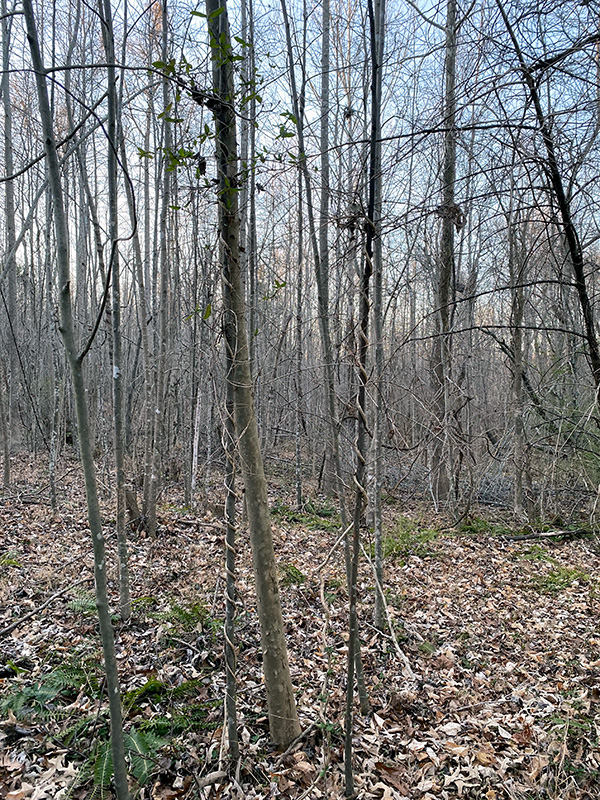
These tree trunks (in our son’s forest in North Carolina) are being encircled by non-native honeysuckle vine. The trees haven’t leafed out yet, but as with so many non-natives the honeysuckle is green and growing, strangling the trees.
Where did they come from? From people’s yards! Birds eat the berries and poop them out as they fly over and in natural areas.
- Learn more:
- Penn State Extension: The invasive Japanese honeysuckle
Swallow-wort (Vincetoxicum)
There are two types of swallow-wort: Pale swallow-wort or dog-strangling vine (Vincetoxicum rossicum; syn. Cynanchum rossicum) and Black swallow-wort or black dog-strangling vine (Vincetoxicum nigrum; syn. Cynanchum louiseae). Unfortunately, both have appeared in our landscape.
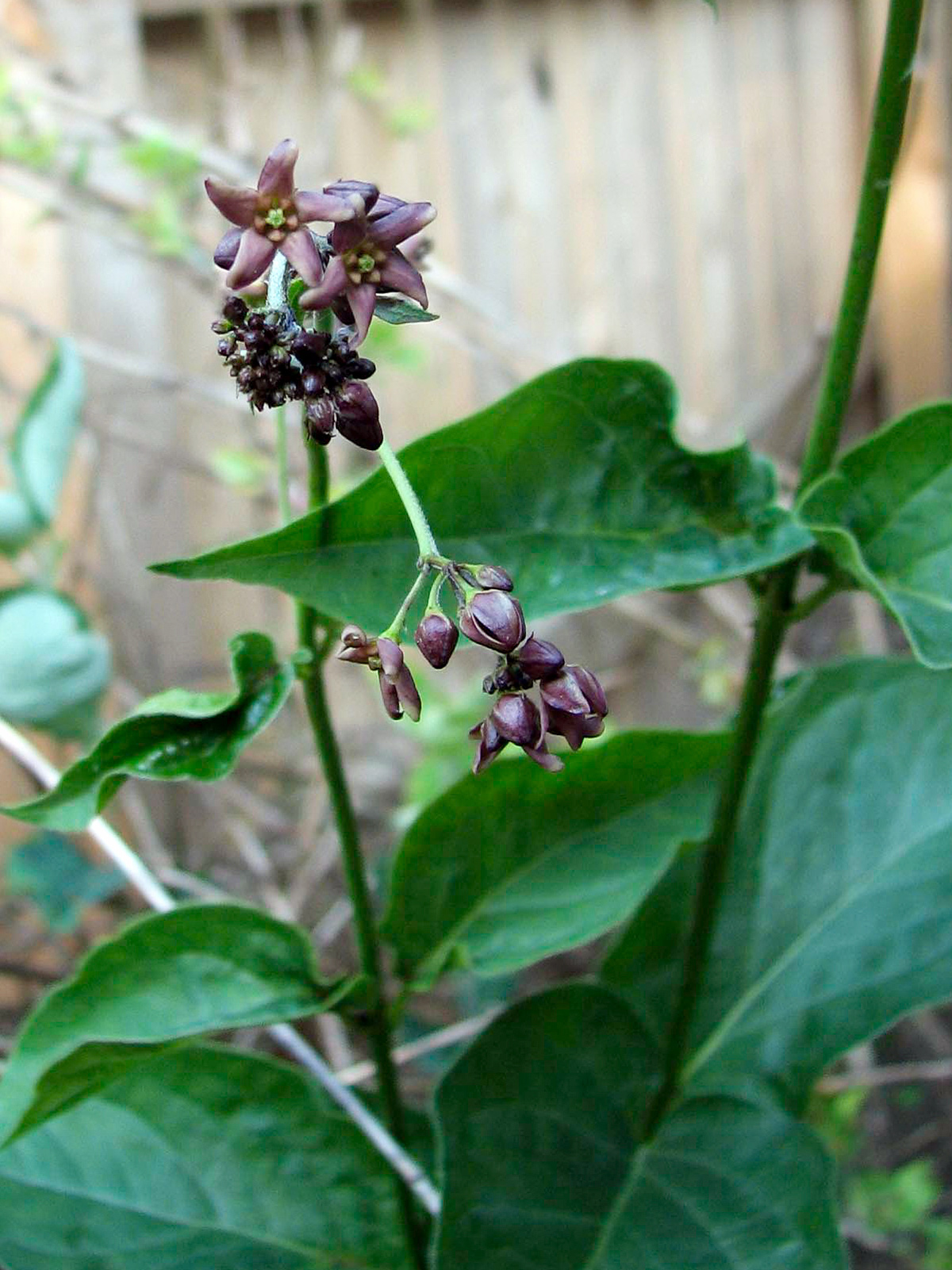
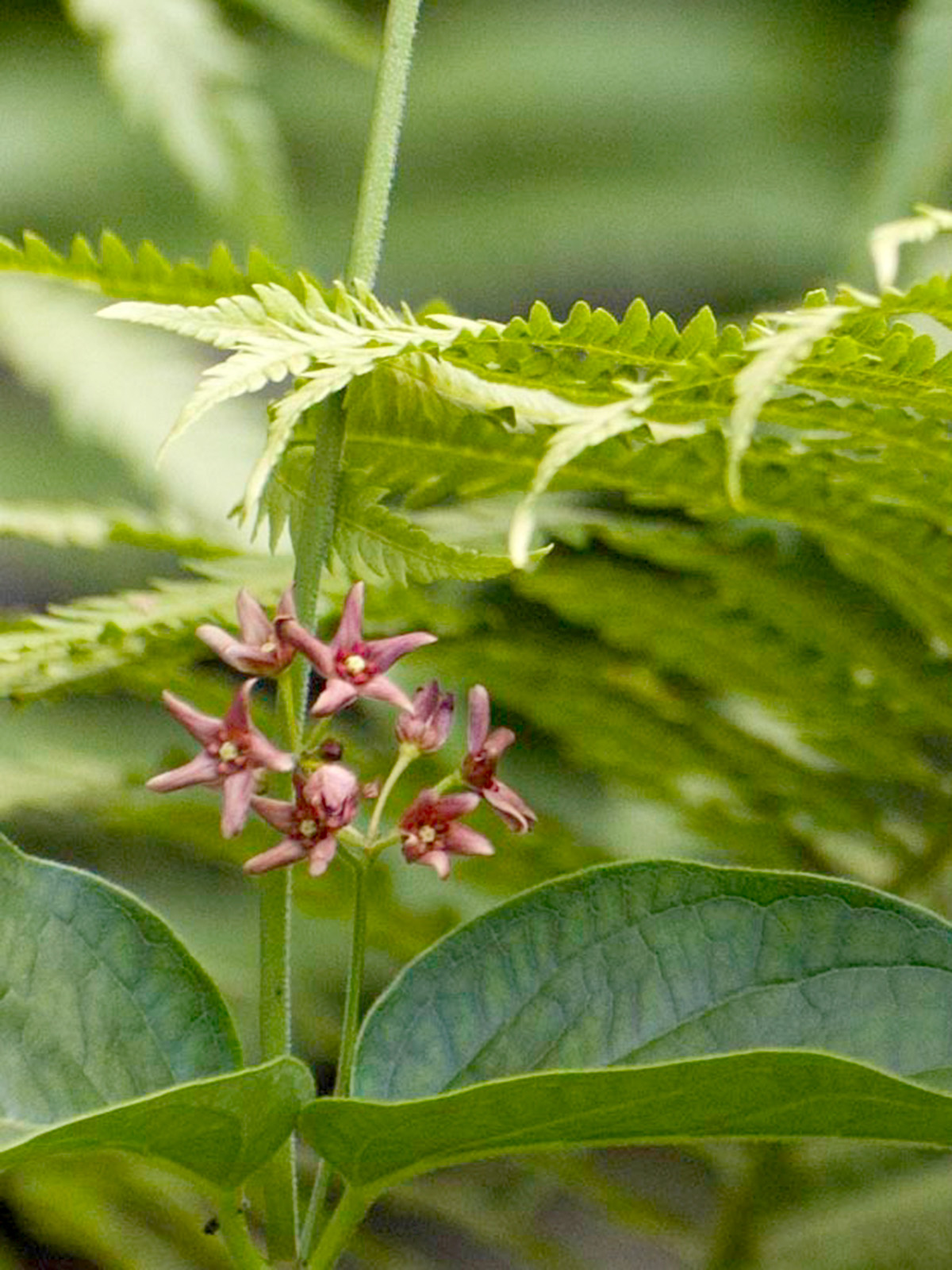
These were definitely NOT planted in my yard on purpose. I don’t know how they came to be on my property — they probably hitched a ride on a plant I purchased, or maybe it just blew in as a seed.
I don’t think I would have even recognized it for what it was if it weren’t for the fact that we had recently attended one of our HGCNY garden tours where the host pointed it out on his property.
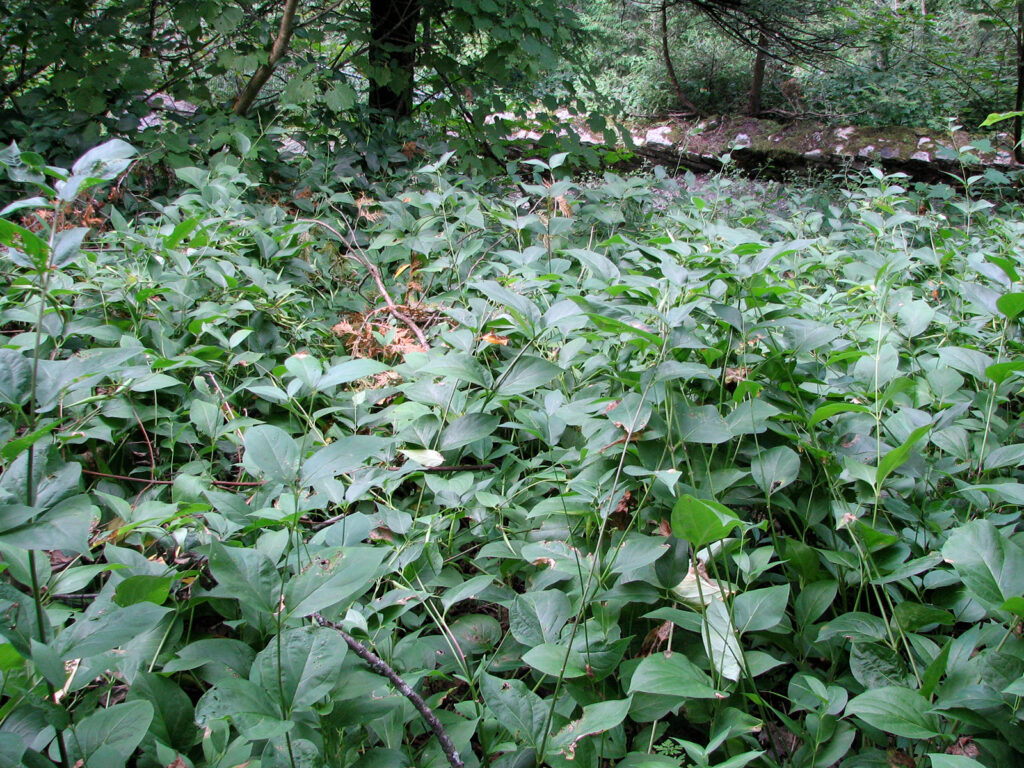
The tragedy of swallow-wort is that it’s similar enough to native milkweed to trick monarchs into laying their eggs on it, but it’s not chemically similar enough to support the caterpillars. They die. It also crowds out native milkweed (and everything else in its path). A tragedy all around.
It’s an especially dire problem in our local state parks, crowding out the magnificent natives that belong there and support life.
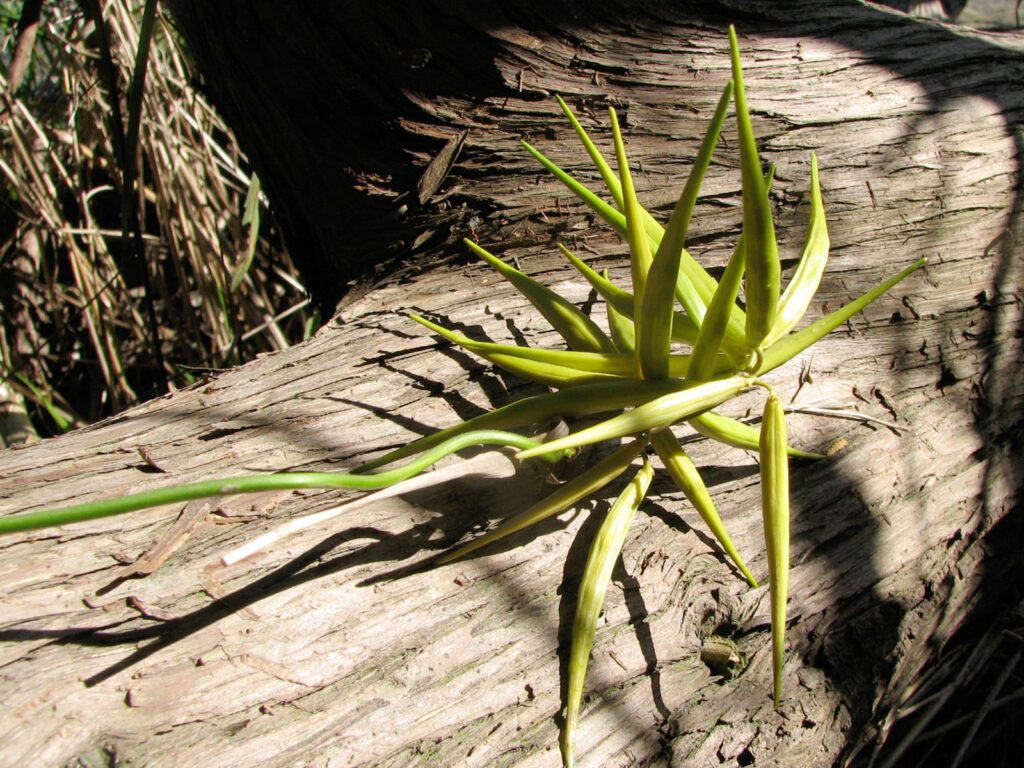
This black swallow-wort seedpod hints at its relationship to native milkweed.
(This photo was taken at Green Lakes State Park since my swallow-wort wasn’t allowed to live long enough to set seed!)
- Learn more:
- Cornell CALS: Moth provides hope against invasive swallow-wort – biocontrol
- NY Invasive Species Research Institute: Swallow-wort biocontrol research and outreach
- Michigan State Univ.: Biological control of invasive swallow-wort vines in Michigan
- Monarch Joint Venture: Invasive Species Alert: Black and pale swallow-wort
Periwinkle (Vinca minor) and (V. major)
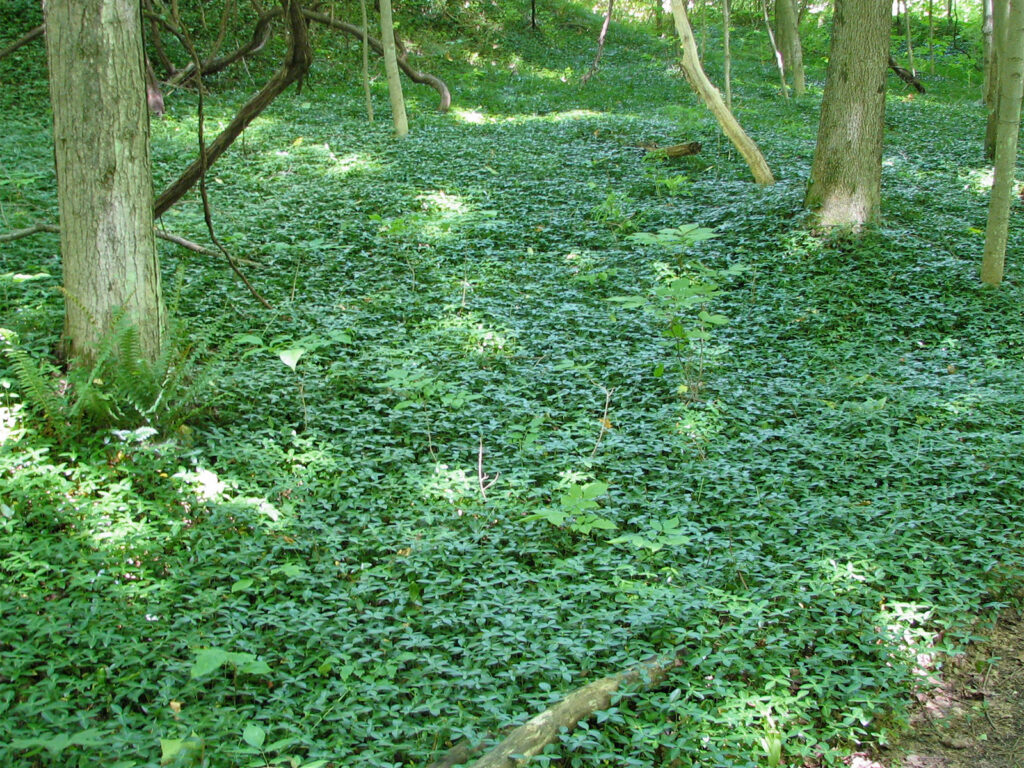
This shows how it can spread in a natural area, in this case, a local nature center.
It’s often found at the site of old homesteads (as is this land). But since it’s so often growing out “in the wild” it’s sometimes hard to convince some people that it isn’t a native plant.
It’s hard to believe, but when we first moved in, I found some stray bits of both types of vinca (also known as periwinkle) in the back yard. I diligently gathered up all the bits and replanted it so it would gradually fill the back yard. And for the usual reasons: the blue flowers were so pretty and it was easy to grow.
I paid for that decision, since I had to battle it for many years. It’s now (2020) almost all gone, but I still find bits coming up here and there.
English ivy (Hedera helix)
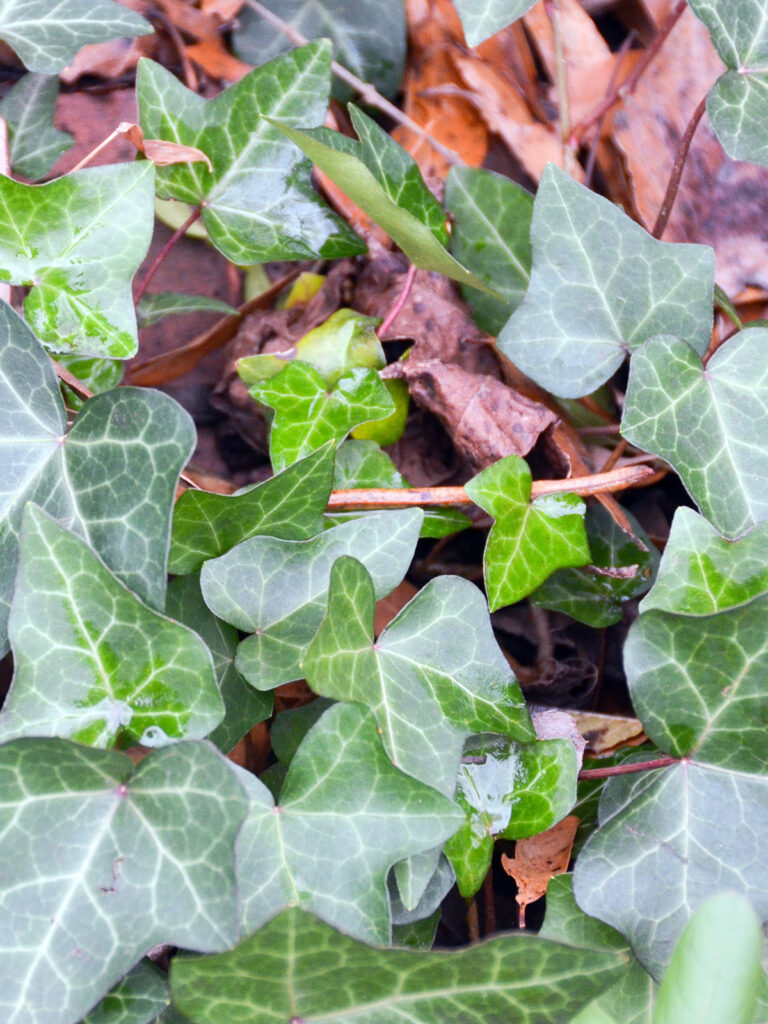
At least I didn’t BUY the vinca, as I did this English ivy . Even though it was a couple of decades ago, I still remember how pleased I was to find such a good deal on a whole flat of English ivy!
I’m still working to eradicate it. For the most part, I’m winning, but a few stray bits remain.
- Learn more:
- Choose Natives: English ivy: Doing what we can may be a good idea
- Eco-answers from the Pros: Removing English Ivy – Three different techniques
